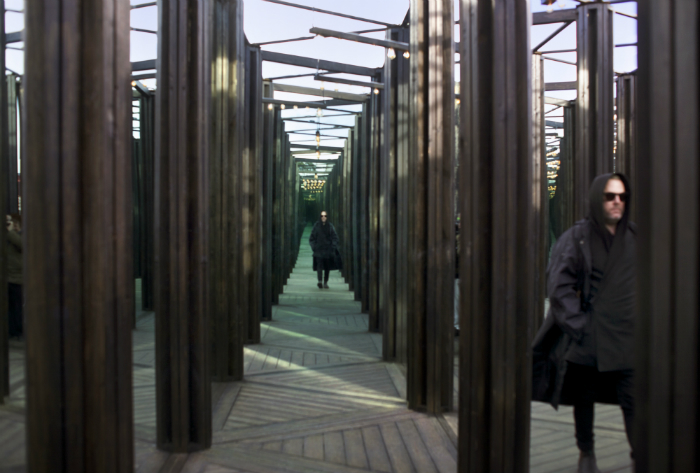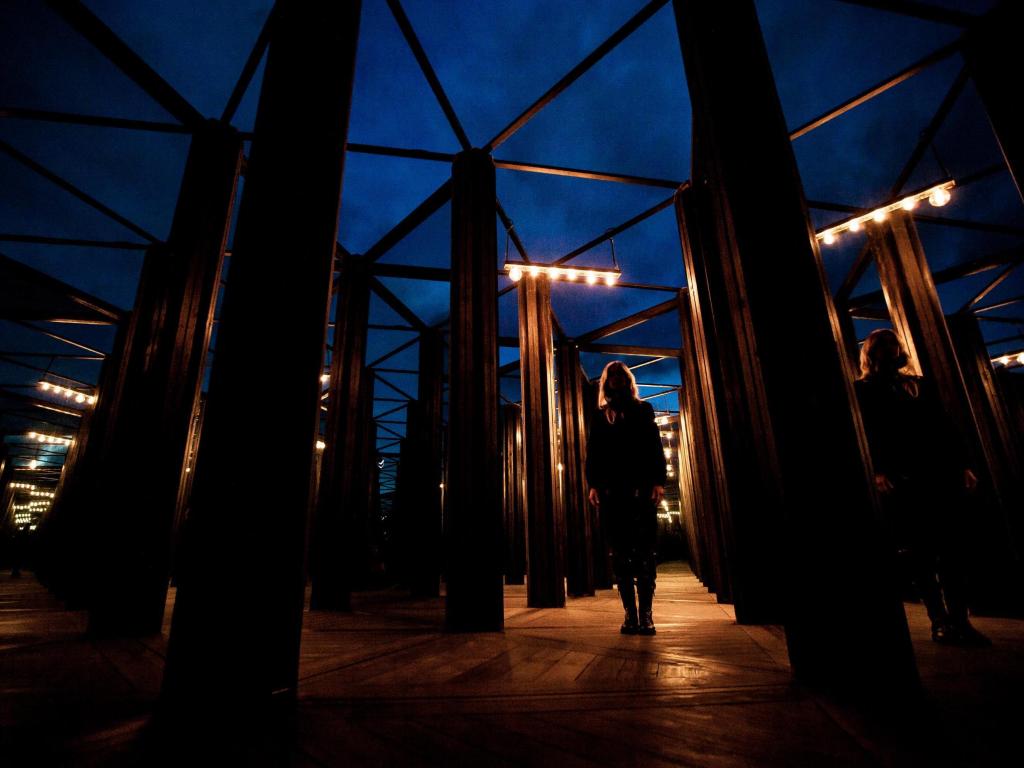Images supplied
Optical illusions have long fascinated humanity. The Greek philosopher Aristotle observed that while our senses can usually be trusted, they can easily be fooled.
Mazes too, have a remarkable hold on the imagination, as evidenced by the enduring legend of the Minotaur. So, it’s no surprise that combining labyrinth with illusion generates a remarkable impact on the psyche.
‘There’s something extraordinary about a mirror maze,’ said artist Christian Wagstaff. ‘Mazes interest people anyway but as soon as you turn a maze into a mirror maze, it completely throws it into another realm. Physically as a structure it’s deliberately challenging to get through from A to B, but once you line all the walls with mirrors, floor to ceiling, the maze feels a hundred times bigger.’
Together with colleague and collaborator Keith Courtney, Wagstaff has created the popular art installation House of Mirrors, a mirror maze constructed from 40 tonnes of steel and 15 tonnes of mirrored glass.
Learn more about House of Mirrors
Initially commissioned for Hobart’s 2016 Dark Mofo, the work – all 400 square metres of it – has subsequently delighted and bamboozled audiences in Brisbane, Sydney and Adelaide. Its next stop is Bendigo and Wagstaff is particularly pleased to add a regional venue.
‘When they contacted us we were so happy, because Keith and I, obviously our initial focus was to break the back of the festival circuit in Australia … but we thought, “We’ve got to do a regional tour,” because that’s what carnivals did – they travelled around the country and they went to all the regional towns. So we were so excited that Bendigo Gallery contacted us; it fits perfectly,’ he said.
Karen Quinlan, Director of Bendigo Art Gallery, said she was thrilled to bring the project to Bendigo, describing the work as exciting and immersive.
‘House of Mirrors brings elements of art, science, culture and history together to offer the perfect example of the transformative nature of contemporary art,’ she said.
Modern take on old tradition
The work draws on a long history of amusement parks and fun fairs, with the artists inspired as much by childhood memories as by historical tradition. They also took inspiration from a recent visit to the Copenhagen’s famous Tivoli Gardens.
‘What was wonderful about the Tivoli Gardens is it smelt exactly the same as Luna Park did when I was a child – that smell of popcorn and joy … We’d already toyed with the idea of doing a mirror maze but weren’t 100% convinced, but when we went to the Tivoli Gardens we thought we have to do it because, you know, we’re in our 40s and isn’t it incredible how that scent brings back a memory that’s just so exciting and simple?’
On returning to Melbourne the pair started studying historical examples of mirror mazes before drawing up their own plans based on a formula from the late 1800s. Maquettes and models followed; first miniatures, then a one to one scale model in their North Melbourne workshop which they tested on unsuspecting visitors.
‘Say a courier would arrive and drop off a package for whatever job, we’d say “Come downstairs” and we’d push them into the maze,’ Wagstaff laughed.
‘And every person who went into it, a total random, was completely thrown by it in a really interesting way. It was this expression on their faces that you really only see in amusement parks – I think people use certain muscles in their face that they don’t normally use, it’s quite unusual.’

The power of illusion
Unlike a Hall of Mirrors, where distorted mirrors reflect back a warped reflection of the viewer, the House of Mirrors uses flat mirrors and a complex maze to work its spell on audiences’ perceptions.
‘All the mirrors are dead flat – they’re not curved, they’re reflecting, but what happens with the ways that the mirrors are configured is that it becomes this extraordinary optical illusion that completely throws people.’
Venturing into the maze can be a challenging experience. ‘Everyone reacts to it completely differently and the maze is only as difficult as you allow it to be,’ Wagstaff said.
‘I had a friend who visited it when we were in Sydney for the Sydney Festival, and he walked through it and got through it in one minute and 40 seconds, and I was still in there with other friends – and one of them couldn’t cope with it and another was having the best time, and I had to show them the exit eventually. My friend Mark was outside waiting for us, having conquered it, and he looked so chuffed and happy with himself.
‘And then you get people that want to conquer it but can’t and they get frustrated with themselves. And then you get people who just go into it and they want to get lost. They want to experience all the different optical illusions and really take the time and enjoy it.’
Click here to book for House of Mirrors
Visitors who give themselves over to the art work have several treats in store, Wagstaff continued.
‘There are so many wonderful, subtle optical illusions that happen. There’s a location we call the sweet spot – and we haven’t found them all – but there’s one that’s my favourite; you’ve got this classic scenario where you’re looking down this corridor and it seems to go on for a hundred metres, like in an Orson Welles movie or something, it’s quite surreal.
‘And then you realise that there’s a single figure maybe 20 or 30 metres down the hall with their back to you – and then you realise it’s you! You’re looking at the back of yourself. If I’ve got friends or colleagues who are coming up to take a look, I love taking them to that spot – I don’t tell them what it is, I just let them discover it, and it really, really throws people.’
Challenging perceptions
Like any art work, House of Mirrors can be experienced on multiple levels. Some will experience it purely as entertainment, but it’s also possible to read a deeper meaning into the mirror maze.
‘The way we’ve made the structure is that you come to a point, every two steps, where you have to make a decision – and that is a metaphor for life. And being a mirror maze it’s reflective as well, so wherever you turn your perception changes and things are thrown in front of you that you don’t expect. It absolutely is a metaphor for life and I think that’s why people relate to it,’ Wagstaff said.
‘It completely challenges people’s peripheral vision, it challenges their emotions, it challenges their ideas of what choices should be made – it almost rewires their brains. People are so stuck in this rut, this behaviour of staring at their phones constantly, staring at social media and being fed all of this information and not having any real control over that, but in a maze ultimately you’ve got your own control – it’s up to you where you turn. We love that about it.’
House of Mirrors
Presented by Bendigo Art Gallery in partnership with Latrobe Arts Institute
Rosalind Park, Bendigo
www.bendigoartgallery.com.au/HouseofMirrors
7-30 April 2017





